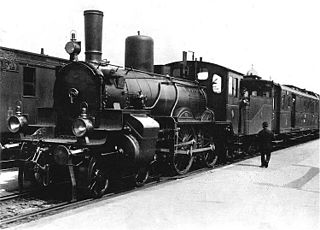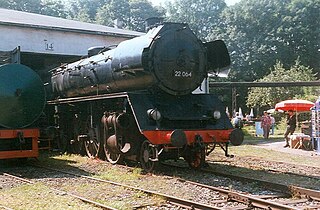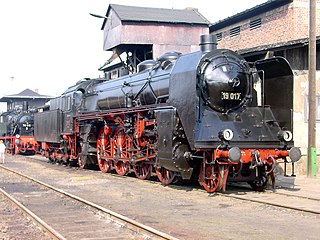| DRB Class 03.10 PKP class Pm3 | |||||||||||||||||||||||||||||||||||||||||||||||||||||||||||||||||||||||||||||||||||||||||||||
|---|---|---|---|---|---|---|---|---|---|---|---|---|---|---|---|---|---|---|---|---|---|---|---|---|---|---|---|---|---|---|---|---|---|---|---|---|---|---|---|---|---|---|---|---|---|---|---|---|---|---|---|---|---|---|---|---|---|---|---|---|---|---|---|---|---|---|---|---|---|---|---|---|---|---|---|---|---|---|---|---|---|---|---|---|---|---|---|---|---|---|---|---|---|
 DR 03 1010 | |||||||||||||||||||||||||||||||||||||||||||||||||||||||||||||||||||||||||||||||||||||||||||||
| |||||||||||||||||||||||||||||||||||||||||||||||||||||||||||||||||||||||||||||||||||||||||||||
| |||||||||||||||||||||||||||||||||||||||||||||||||||||||||||||||||||||||||||||||||||||||||||||
| |||||||||||||||||||||||||||||||||||||||||||||||||||||||||||||||||||||||||||||||||||||||||||||
| |||||||||||||||||||||||||||||||||||||||||||||||||||||||||||||||||||||||||||||||||||||||||||||
The German Class 03.10 (Baureihe 03.10 or BR 03.10) engines were standard steam locomotives ( Einheitsdampflokomotiven ) belonging to the Deutsche Reichsbahn and designed for hauling express trains.
| DRB Class 03.10 PKP class Pm3 | |||||||||||||||||||||||||||||||||||||||||||||||||||||||||||||||||||||||||||||||||||||||||||||
|---|---|---|---|---|---|---|---|---|---|---|---|---|---|---|---|---|---|---|---|---|---|---|---|---|---|---|---|---|---|---|---|---|---|---|---|---|---|---|---|---|---|---|---|---|---|---|---|---|---|---|---|---|---|---|---|---|---|---|---|---|---|---|---|---|---|---|---|---|---|---|---|---|---|---|---|---|---|---|---|---|---|---|---|---|---|---|---|---|---|---|---|---|---|
 DR 03 1010 | |||||||||||||||||||||||||||||||||||||||||||||||||||||||||||||||||||||||||||||||||||||||||||||
| |||||||||||||||||||||||||||||||||||||||||||||||||||||||||||||||||||||||||||||||||||||||||||||
| |||||||||||||||||||||||||||||||||||||||||||||||||||||||||||||||||||||||||||||||||||||||||||||
| |||||||||||||||||||||||||||||||||||||||||||||||||||||||||||||||||||||||||||||||||||||||||||||
| |||||||||||||||||||||||||||||||||||||||||||||||||||||||||||||||||||||||||||||||||||||||||||||
The German Class 03.10 (Baureihe 03.10 or BR 03.10) engines were standard steam locomotives ( Einheitsdampflokomotiven ) belonging to the Deutsche Reichsbahn and designed for hauling express trains.

The DRG's Class 03.10 engines were an evolutionary development from the Class 03 locomotives, comparable to those of Class 01.10 which had evolved from Class 01. The first 03.10 was built in 1939 and 140 units were to be manufactured. As a result of the Second World War and the switching of production to 'war essential' goods, only 60 vehicles were completed. Originally supplied with the 2'2 T38St standard tenders, the 03.10 could later be encountered coupled to 2'2'T34 tenders. The locomotives were mainly produced by the firms of Borsig, Krupp and Krauss-Maffei, and were fully enclosed by streamlining plates. The vehicles were given the operating numbers 03 1001 – 1022, 03 1043–1060 and 03 1073 – 1092.
After the war, 47 locomotives remained in Germany; 26 were taken over by the Deutsche Bundesbahn and 21 by the Deutsche Reichsbahn in East Germany. Ten other locomotives ended up with the Polish State Railways (PKP) as the Pm3. Two engines (03 1091 and 1092) had to be retired as early as 1944 due to war damage. The fate of 03 1002 is unknown. Because the top speed on main lines had to be reduced due to route damage, the streamlined shells became uneconomical, not least because they made maintenance more difficult, and they were removed from all the engines except the DR's 03 1087. Almost all the DR and DB locomotives were rebuilt. Only 03 1047, 1097 and 1086 (DR) had been retired before the reconstruction programme. [1]
The locomotives' boilers' condition worsened due to the use of non-aging St47K steel (on 10 October 1958 the boiler of locomotive 03 1046 exploded due to degrading), so the Deutsche Reichsbahn had to replace them with newly designed boilers. In addition, several other components were overhauled to make the engines more economical. Thus the term Rekolok ('reconstructed locomotive') is entirely accurate. A total of 16 engines were rebuilt in 1959. In 1952, 03 1087 was converted to the Wendler brown coal dust firing system. Because this type of firing was unsuccessful for passenger train services, it was re-converted in 1959.
From 1965 all the Rekoloks were converted to oil-firing except for 03 1057 and 1087. Until their retirement at the end of the 1970s the three-cylinder express engines were the spearhead of the DR's high-value express train services, covering up to 22,000 km (13,670 mi) per month. Number 03 1010 is a museum locomotive with the DB AG, stationed in Halle and frequently used in heritage services. It was re-converted to coal-firing. The non-operational, oil-fired 03 1090 is also preserved and is housed in the former locomotive depot (Bahnbetriebswerk or Bw) at Schwerin.
| DB Class 03.10 Neubau-Ersatzkessel | |||||||||||||||||||||||||||||||||||||
|---|---|---|---|---|---|---|---|---|---|---|---|---|---|---|---|---|---|---|---|---|---|---|---|---|---|---|---|---|---|---|---|---|---|---|---|---|---|
| |||||||||||||||||||||||||||||||||||||
| |||||||||||||||||||||||||||||||||||||
In 1949 and 1950, the 26 Class 03.10 locomotives remaining with the Deutsche Bundesbahn were refurbished by Henschel in Kassel. The streamlined shells on all the locomotives were removed, mainly due to their poor condition. Externally, these engines can still be distinguished from the Class 03 by their still-recognisable steam dome, their cut-down smokebox door, the flat Erhebung of the superheater regulator, the air reservoirs, the missing front skirt, and the shape of the driver's cab and tender. The locomotives were stationed in Dortmund, Ludwigshafen and Offenburg after their refurbishment. The three engines stabled at the locomotive depot or Bw Dortmund, numbers 03 1014, 03 1022 and 03 1043, were given a special steel blue livery in June 1950 for their boilers, cabs, and cylinder blocks. The smokebox and chimney remained painted black.
In 1952, the feedwater preheater was moved back to the area of the chimney on most of the locomotives and a circular smokebox door fitted.
At the general inspection in 1954, 03 1014, 03 1022 and 03 1043 lost their steel blue livery again.
Because major signs of aging appeared on the boilers, the firm of Krupp was given the task of replacing them with welded boilers which had a combustion chamber. In addition the locomotives were given newly designed tenders with covers and supply equipment. Both were installed in the repair shop (Ausbesserungswerk or AW) in Brunswick between 1957 and 1961. In autumn 1958, all 26 engines were rehomed to Bw Hagen-Eckesey, after some had previously been based in Hamburg-Altona and Paderborn. These were numbers 03 1001, 1004, 1008, 1009, 1011–1014, 1016, 1017, 1021, 1022, 1043, 1045, 1049–1051, 1054–1056, 1060, 1073, 1076, 1081, 1082 and 1084. Between November 1965 and September 1966, all Class 03.10 locomotives were withdrawn, retired and scrapped.
The former no. 03 1010 is a museum locomotive retained as part of the DB fleet. It is homed in the former railway depot of Halle P (DB Museum, Halle (Saale)), maintained by the Railway Social Work Foundation (BSW) Group, Traditionsgemeinschaft Bw Halle P BSW, and supported financially by the Society for the Preservation of Schnellzugdampflok 03 1010 Following its main inspection in 2011 by the Meiningen Steam Locomotive Works, they use it to haul railway specials throughout Germany. [2]
The non-operational, oil-fired no. 03 1090 has also been preserved as a museum locomotive. It, too, is owned by DB. It is on loan to the Mecklenburg Railway and Technology Museum, located in the former shed at Schwerin Central Station.
The streamlined 03 1015 is today owned by the PKP and is on display as a non-operational exhibit in the Warsaw Railway Museum.

The Deutsche Reichsbahn-Gesellschaft's BR 01 steam locomotives were the first standardised (Einheitsdampflokomotive) steam express passenger locomotives built by the unified German railway system. They were of 4-6-2 "Pacific" wheel arrangement in the Whyte notation, or 2′C1′ h2 in the UIC classification. The idea of standardisation was that it would reduce maintenance costs; i.e. if a BR 01 whose engine shop was in, say, Berlin broke down in Dresden, instead of having to ship the necessary part from Berlin and take the locomotive out of service, a part from the Dresden shop could be used as all of the engines, parts, and workings were exactly the same and produced nationwide. Thus it was a "standard" product for engine shops.

The DRB Class 50 is a German class of 2-10-0 locomotive, built from 1939 as a standard locomotive (Einheitsdampflokomotive) for hauling goods trains. It had one leading axle and five coupled axles and was one of the most successful designs produced for the Deutsche Reichsbahn.

The Prussian Class S 3s were saturated steam locomotives developed by Hanomag for the Prussian state railways and were built from 1893.

The Class 03 steam engines were standard express train locomotives (Einheitslokomotiven) in service with the Deutsche Reichsbahn.

The Class 44 was a ten-coupled, heavy goods train steam locomotive built for the Deutsche Reichsbahn as a standard steam engine class (Einheitsdampflokomotive). Its sub-class was G 56.20 and it had triple cylinders. It was intended for hauling goods trains of up to 1,200 tonnes on the routes through Germany's hilly regions (Mittelgebirge) and up to 600 tonnes on steep inclines. They were numbered 44 001-44 1989.

The Deutsche Reichsbahn Class 01.10 was a series of express steam locomotives. Developed at the end of the 1930s it was part of the standard locomotive programme (Einheitsdampflokomotiven). Modernized in the 1950s, the class lasted almost until the end of steam operation at the West German Deutsche Bundesbahn (DB).

The German Class 41 steam locomotives were standard goods train engines (Einheitslokomotiven) operated by the Deutsche Reichsbahn (DRB) and built from 1937 to 1941.
The German Class 23 engines of the Deutsche Reichsbahn (DRG) were standard (Einheitslokomotiven) steam engines that were conceived as a replacement for the Prussian P 8 by the Schichau Works. They were given the same boiler as the Class 50s which were developed in parallel and, like them, the newly developed 2'2' T 26 tender with its front wall that protected train crews during reverse running.

The two German DRG Class 61 steam engines were express train locomotives specifically built by Henschel for the Henschel-Wegmann train in service with the Deutsche Reichsbahn. The Henschel-Wegmann train was an initiative of the German locomotive construction industry, intended to be able to demonstrate a powerful steam locomotive-hauled train alongside the emerging express diesel multiple units, such as the Hamburg Flyer.

The Prussian G 12 is a 1'E 2-10-0 goods train locomotive built for the Prussian state railways.

The steam locomotives of DR Class 25.10 were passenger train locomotives built for the Deutsche Reichsbahn (DR) in East Germany after World War II.

The Rekolokomotives of DR Class 52.80 first appeared in 1960 in service with the Deutsche Reichsbahn in East Germany as extensive rebuilds of the wartime locomotives or Kriegslokomotiven of the DRB Class 52 built by Nazi Germany. This modernisation, described as 'reconstruction', extended to almost all of the components and systems on the engine.

The steam locomotives of DR Class 22 were reconstructed passenger train locomotives in service with the Deutsche Reichsbahn in East Germany after the Second World War.

After the Second World War, the Deutsche Reichsbahn in East Germany had a requirement for powerful goods train locomotives with a 15-18 tonne axle load for routes in the Mittelgebirge, the mountainous areas in the south of the country. As a result, the DR Class 58.30 emerged, as part of the so-called 'reconstruction programme', based on rebuilds of the former Prussian G 12 locomotives. Between 1958 and 1962, 56 locomotives, originally from various state railways were converted at the former repair shop, RAW Zwickau.

The Saxon Class XX Failed to parse : {\displaystyle \textstyle \mathfrak{H}} were German eight-coupled express train, tender locomotives built for the Royal Saxon State Railways just after the First World War. The locomotives, which became known as the 'Pride of Saxony' (Sachsenstolz) were the first and only German express locomotives with a 2-8-2 wheel arrangement and, at the time of their appearance, were the largest express engines in the whole of Europe. In 1925, the Deutsche Reichsbahn grouped these locomotive into their DRG Class 19.0.

The express train locomotives of Oldenburg Class S 10 were built for the Grand Duchy of Oldenburg State Railways for duties on the Bremen–Oldenburg–Wilhelmshaven line, which was the most important express route in Oldenburg. They were amongst the few locomotives of this railway company that were not based on those of the Prussian state railways, because the light railway track dictated that they had to have an average axle load of no more than 15 t which was lower than that on comparable Prussian vehicles.
The Prussian Class S 10 included all express train locomotives in the Prussian state railways that had a 4-6-0 wheel arrangement. There were four sub-classes: the S 10, S 10.1 and S 10.2.

The Prussian Class P 6s were passenger locomotives operated by the Prussian state railways with a leading axle and three coupled axles.

The class IV h (four-h) locomotives of the Grand Duchy of Baden State Railway (German: Großherzoglich Badische Staatseisenbahnen, G.Bad.St.E.) were express locomotives with a 4-6-2 (Pacific) wheel arrangement. They later passed to the Deutsche Reichsbahn, who classified them as class 183.